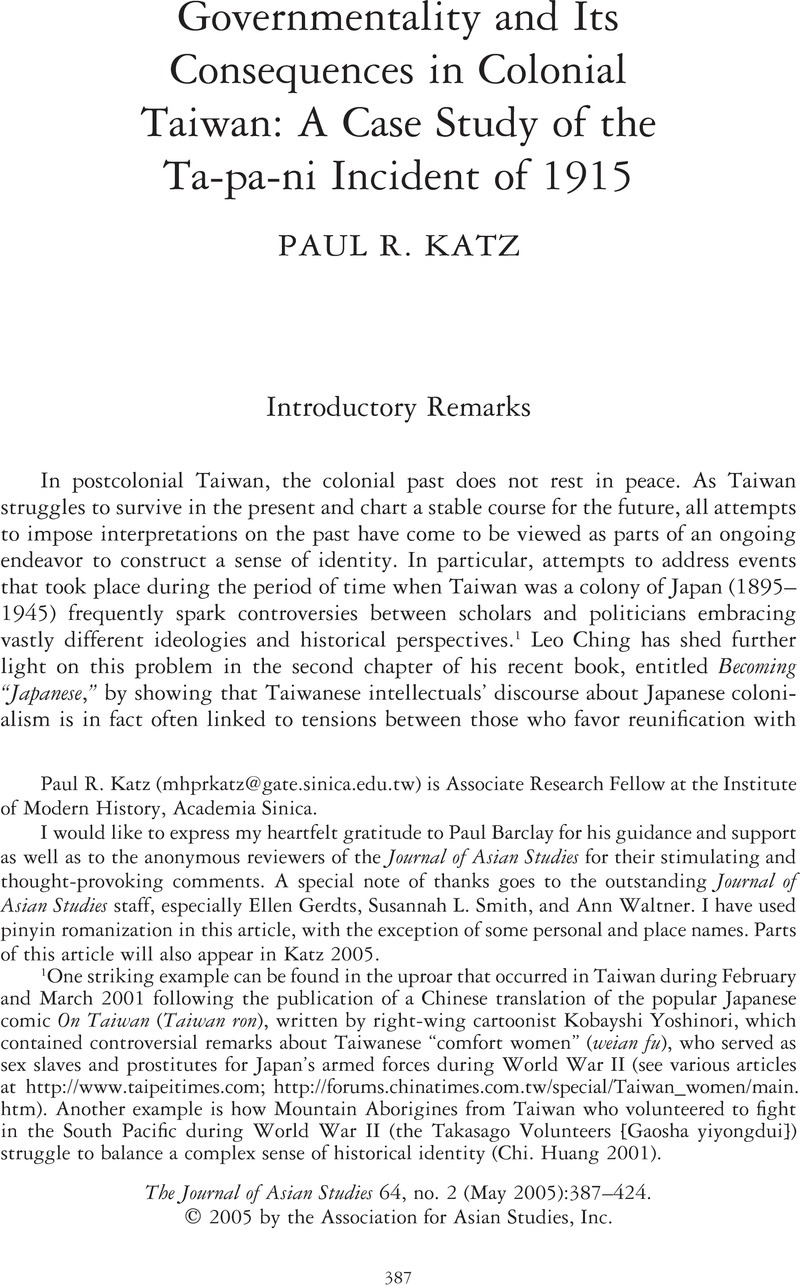Crossref Citations
This article has been cited by the following publications. This list is generated based on data provided by Crossref.
Eskildsen, Robert
2005.
Taiwan: A Periphery in Search of a Narrative.
The Journal of Asian Studies,
Vol. 64,
Issue. 2,
p.
281.
Schwartz, Barry
and
Kim, Mikyoung
2010.
Northeast Asia's Difficult Past.
p.
1.
Heé, Nadin
2014.
Taiwan under Japanese Rule. Showpiece of a Model Colony? Historiographical Tendencies in Narrating Colonialism.
History Compass,
Vol. 12,
Issue. 8,
p.
632.
CHU, FENG-YI
2016.
Diverse Facets in Identities and Party Affiliations of Native Taiwanese Elders.
Issues & Studies,
Vol. 52,
Issue. 03,
p.
1650011.
Zhou, Congyi
2016.
Optimal Size of Rebellions: Trade-Off between Large Group and Maintaining Secrecy.
SSRN Electronic Journal ,
2018.
Salmenkari, Taru
2020.
Building Taiwanese history and memory from below: The role of social movements.
Memory Studies,
Vol. 13,
Issue. 1,
p.
24.



 [Miscellaneous Notes from Anping County].
[Miscellaneous Notes from Anping County]. 